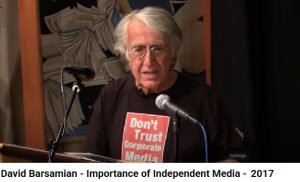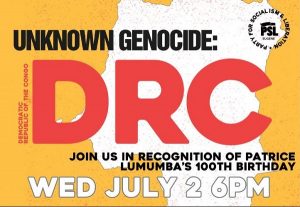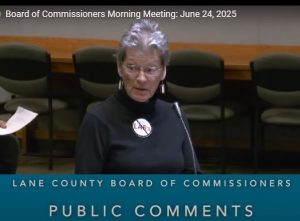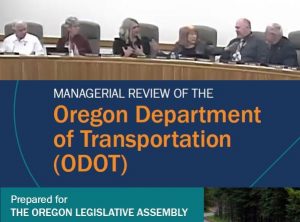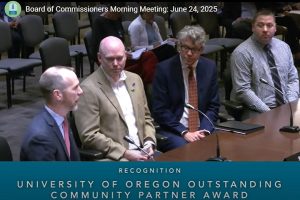City, ATC prepare for rapid growth in active transportation
7 min read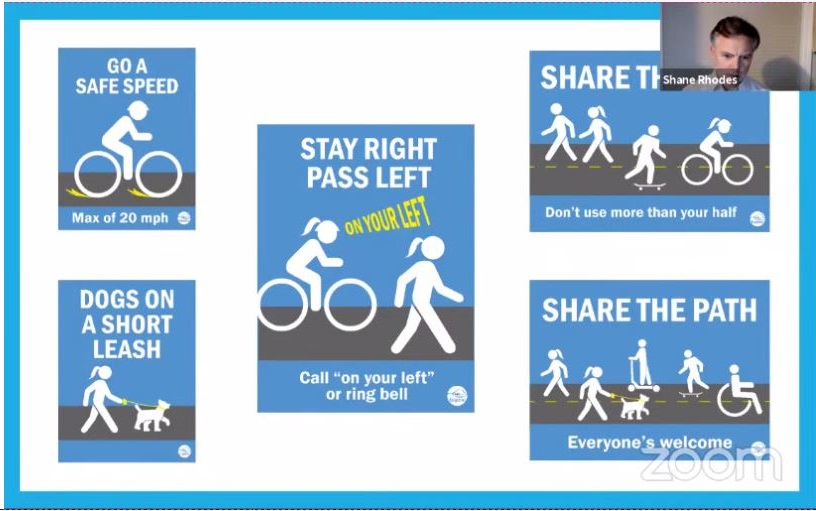
Shane Rhodes reviewed the new Path Etiquette campaign, and invited ATC members to appear in the upcoming video.
At the October meeting of the ATC, the City announced a new focus on active transportation. Rob Inerfeld.
[00:00:08] Rob Inerfeld: Hi everybody. I’m glad to be here tonight and I want to share some good news, which is that we are growing the transportation options team. We have been really successful at getting grants to do transportation options work. And so we created a new what we call ‘Acting In Capacity (AIC) Transportation Options Manager’ position. And so Shane is the successful candidate for that. So Shane is now our Transportation Options Manager in an Acting-In-Capacity role. So we’re really excited for Shane to step up into that position and continue to develop his leadership and he’s been doing a great job and I look forward to great things to come.
[00:00:45] Shane Rhodes: We’ve always seen ATC as educating and growing the community of people who understand transportation in a deeper sense. And as we start to think about this next phase of bringing on new people and potentially having people term out, and having other people come up, we want to make sure that we build a really good solid foundation for people when they come onto the ATC—that they have all the right information and that they understand their role at the ATC, but then also, what their role could be outside of ATC if they want to do more and who all the players are in that.
[00:01:23] John Q: Shane presented an overview of City staff and their current projects.
Thank you for supporting
local citizen journalism
[00:01:28] Shane Rhodes: That’s who we are and who you have a sphere of influence with directly through this committee. And then as a private resident or constituent, you can also use your voice to advocate for what policy changes are important to you in your voice, to a larger group where you can collectively make the big impact together even beyond ATC.
I just want to highlight also neighborhood associations, some of which have Transportation Committees, like the Friendly Area and Whiteaker Community Council and maybe your neighborhood association doesn’t have a transportation subcommittee. You could work with them and make that connection as well. And because those neighborhood associations are official advisory bodies of the City Council, that could be a way to work within that system of working with your neighbors associations to have some foot in the door advisory to City Council in that manner.
[00:02:24] John Q: Shane recapped last month’s discussion about the ATC’s future role.
[00:02:29] Shane Rhodes: So this is some of what we heard at the last self-reflection that we had, and I just wanted to take a few minutes and just highlight some of the key pieces that we heard and that came out from that.
So I think this first one was an interesting one to me, this idea of ATC being this connection between the interest groups as a sort of hub and spoke. I think there are some interesting key pieces there. If we, if you were actually connected well to these organizations, it could be beneficial to have reporting back to us and figuring out how to best be that hub. So I think that one deserves a little bit more discussion and could be a part of what we talk about.
Evaluating projects, I think, what’s working, what’s not, data gathering; I think that’s an important role currently. We just need to figure out how to do it better so that you feel more empowered and that this is actually happening.
This work plan piece, this is something that I think relates directly to the reshuffling that’s going on with our work and a work plan that we are creating and our plan now is to do a two year work plan coming up, and that will really help dictate what, how we interact with ATC. And we want ATC to have its own work plan. I know that the (Springfield Bicycle & Pedestrian Advisory Committee) BPAC created a work plan, and I think that whether it’s, we create a work plan for ATC, and that helps as, becomes a part of our city staff work plan, or vice versa, I think that we’ll see how that shakes out, but I’m definitely happy to work with some of you on what that work plan is.
[00:04:03] John Q: Shane also talked about Path Etiquette.
[00:04:06] Shane Rhodes: I just want to give a quick update on the Path Etiquette campaign, because we did implement that this summer and it was a great start. Just to give some historical reference, the Path Etiquette campaign was something that we had started years ago to think about, because we had been hearing about issues on our paths. We looked at what other communities were doing, including ones that had a similar message to what we were aiming for. We gathered from Marin, Boulder, Atlanta different messages in those communities and were close to what we wanted to do for ours. But these are our our main messages: There are two about sharing the path, one that is ‘Everyone’s welcome,’ talking specifically about all modes, all types of people, welcome on the path. Without using a lot of words, just simple pictures and words. Don’t use more than your half. Dogs on a short leash. As long as people follow these rules, especially on passing, calling out ‘On your left,’ ringing your bell, and path courtesy just overall, is a big message that we tried to get out during this piece.
The most discussion from community members was this one about speed. About 10 to 12 miles an hour is a recommended speed when it’s crowded or there are other people on the path. Twenty miles per hour is only when there is no one else around and you are able to go 20 without impacting other users. So it’s a nice round number that fits well with existing rules and protocols. And we also have our ’20 Is Plenty’ campaign.
But those are our main messages. So the plan is to do some of that general education, direct education, and then potential enforcement. We have one more step in the education piece and we are working on a video that we’re hoping to film in the next few weeks before the weather turns too bad, and we maybe get some beautiful fall colors in there. And so we are going to be looking for people to be in that video, want to make that call out to ATC members. If you’re interested, we’d love to have you as a part of that Path Etiquette video.
And then our plan in the future is to use this campaign in rotation with others. So we have our, every corner is a crosswalk. We’ve done ‘Eye-to-Eye’ we have our ’20 is Plenty,’ we have this Path Etiquette campaign. And I’m working with Kelsey to come up with our plan on the campaign rotations and how we implement them each year.
[00:06:42] John Q: Daniel Wilson asked about a sharrow, the marking on the street that bikes share the road with cars.
[00:06:48] Daniel Wilson: My question with sharrows is, to what extent are they a good use of limited resources, as opposed to other things that we could do with that same money. I’ve had more than one negative interaction on a street with a sharrow. And the sharrow didn’t help me. Because, if the driver’s confused, then the driver’s confused.
[00:07:11] Andrew Martin: I don’t think the drivers respect sharrows more than just a blank street. But it is helpful, I think, for me, with wayfinding. But I guess just to be really frank, our unprotected bike lanes don’t really offer any actual protection more than a sharrow does. Maybe drivers respect them more. Maybe that’s just because there’s more space and you’re out of their way but I’m probably not the only one on this Zoom that’s been joined in the bike lane on 18th or some really busy street by a vehicle that had a distracted driver. So, yeah, I’m not sure that regular bike lanes provide that much more protection. That’s why I think we need to be talking about protected bike lanes. Not just paint, we need separation physically.
[00:07:51] John Q: A public comment came from Duncan, from Jefferson Westside.
[00:07:56] Duncan: Jefferson Westside, we conducted a survey of all our sidewalks for walkability, and we have a set of spreadsheets, which describe all the streets in Jefferson Westside. And if you’d like, I can send that to you. There’s a bunch of spreadsheets. We are attempting to map the whole thing, but we have not been able to do that yet. I’ll let you know when we got it. That’s it
[00:08:22] Grace Kaplowitz: Wonderful. Thank you. I saw a lot of nods, both amongst the committee and staff around being interested in hearing or seeing this spreadsheet. So that sounds like really great information and hopefully we can do and see more of that across the city.
